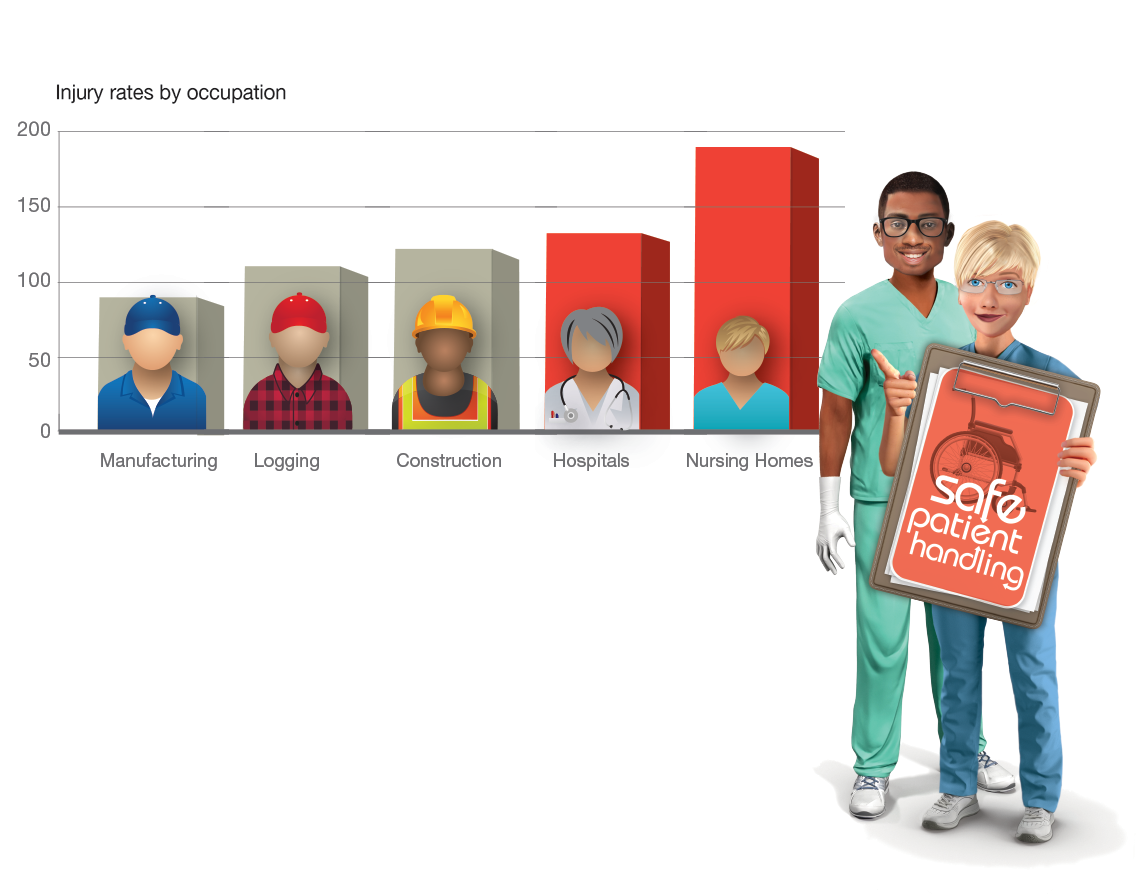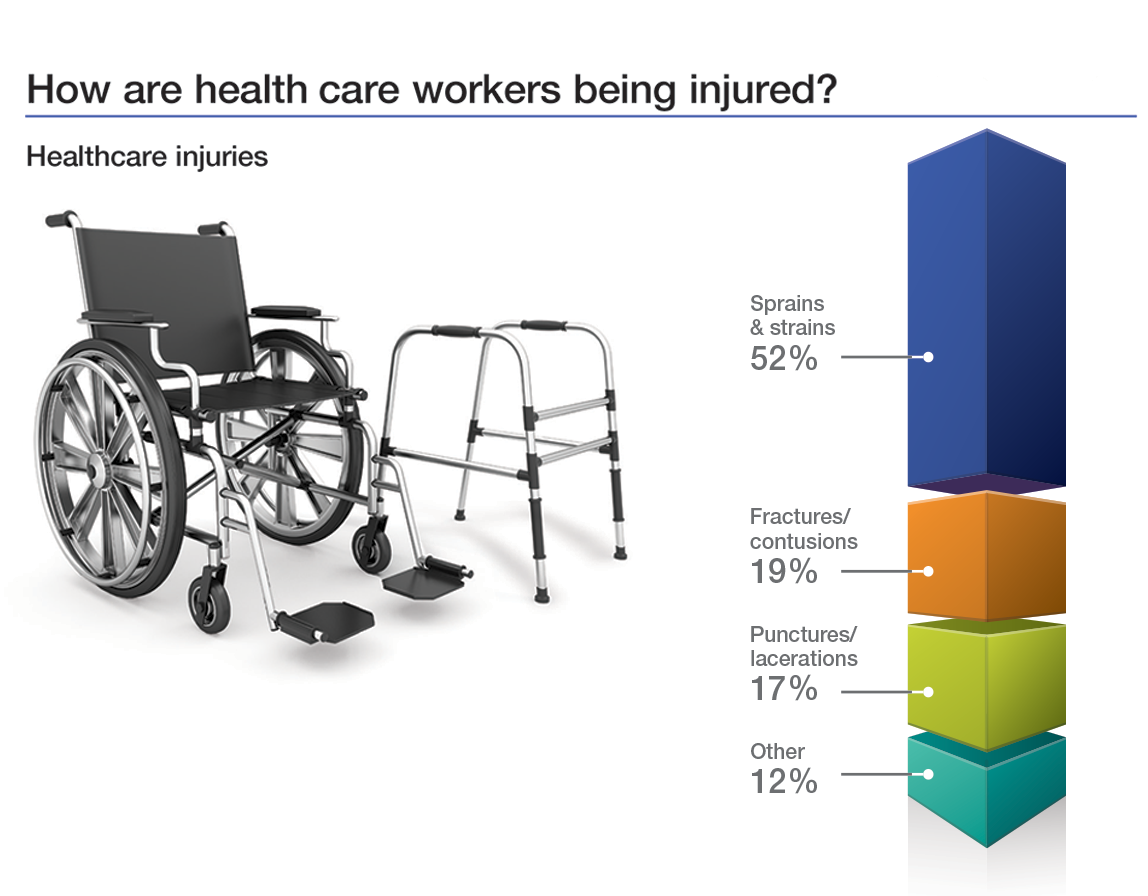January 11, 2019
The health care workers at greatest risk for on-the-job injuries
It’s more dangerous to work in a hospital than to construct one.
That’s according to the Bureau of Labor Statistics data on non-fatal injuries by occupation.
Although construction has a reputation as a high-risk industry, workers in hospitals and nursing homes have higher injury rates than workers in manufacturing, construction or logging.
See the chart below for the comparison of injury rates by occupation.
Who is being injured?

Source: Bureau of Labor Statistics 2017 incident rates for non-fatal injuries per 10,000 full-time workers.
How are health care workers being injured?
In its February 2018 Work Comp newsletter , the Minnesota Department of Labor and Industry reported on the sources of injuries in Minnesota hospitals in 2016:
- Nearly 60 percent due to overexertion
- Nearly 20 percent due to slips, trips and falls
- Nearly 10 percent due to violence
Thirty percent of the injuries directly involved a hospital patient. Of those injuries involving a patient, the majority were due to overexertion while lifting or moving a patient.
The second most common cause was intentional or unintentional violence by the patient. Health care workers face some of the greatest risk for workplace violence. See our De-escalation Team Training - health care resource for information on de-escalation tactics in health care settings.
Strains and sprains account for more than half of all health care injuries reported to SFM. Many strain and sprain injuries occur while manually lifting and transferring patients. Fractures and contusions made up 19 percent of injuries, and punctures and lacerations were another 17 percent.
See the chart for the types of injuries sustained by health care workers.

Source: SFM 2007-2016 health care policyholders claim data.
Some groups at more risk
Nursing home workers and other types of health care professionals have higher injury rates. Home health care workers face additional challenges due to their unique working environment.
Safety in health care faces another challenge due to an aging workforce. The U.S. Department of Labor reports that the average nurse is now older than 50 years old.
When health care workers over the age of 40 are injured, their claim is 76 percent more likely to be an expensive lost-time claim, where they are unable to return to work quickly. Older workers are at high risk for serious injuries due to lost muscle strength and other factors. Their more severe injuries and slower recovery times result in claim costs 2.4 times higher than for younger workers.
For more data and tips on how to reduce lifting injuries, download our occupational injuries in health care fact sheet .





